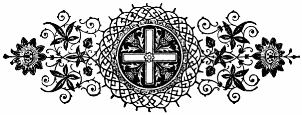
Saints Abdon and Sennen
|

Saints Abdon and Sennen![]() July 30th
July 30th ![]()
They were Persians who courageously confessed the faith of Christ in the persecution of Decius, ministering to their fellows and burying the bodies of the martyrs. They were brought to Rome as prisoners, refused tp sacrifice, and spat upon the images of the gods, wherefore they were exposed to the beasts; as neither lions nor bears would touch them they were hewn into pieces by gladiators. But the more their bodies were mangled and covered with wounds the more were their souls adorned and beautified with divine grace, and rendered glorious in the sight of Heaven. The Christians at Rome did not treat them as strangers, but as brethren united to them in the hope of the same country; and their bodies were buried by night at the house of a subdeacon called Quirinus. In the reign of Constantine their relics were removed to the burying-place of Pontian (called also, from some sign, the "Bear and Cap" Ad Ursum Pileatum), situated near the Tiber on the road to Porto; this translation took place in consequence of a vision wherein the martyrs revealed their place of burial. These particulars are derived from their late and unreliable "acts", but the veneration of SS. Abdon and Sennen in Rome can be traced back to the fourth century.

The acts state that they gave burial in Persia to SS. Olympias (Olympiades) and Maximus, and these two victims of persecution are mentioned in the Roman Martyrology on April 15.
The Passio of Abdon and Sennen is printed in the Acta Sanctorum, July, vol. vii. Opinion inclines to the view that these martyrs suffered in the Diocletian persecution, for the mention of Decius in their acts is of no authority and is in contradiction with other statements in the same account. The date of their feast and their burial in the cemetery of Pontian are already mentioned in A.D. 354 in the "Depositio Martyrum" written in that year. Moreover, in the cemetery of Pontian may still be seen on the wall of a subterranean baptistery in that catacomb a fresco (sixth or seventh century) representing SS. Abdon and Sennen with one or two other martyrs, the names being painted with figures. See Mgr. Wilpert, Die Malereien der Katakomben Roms, pl. 258, and also DAC., vol. i, cc. 42-45, and vol. ii, cc. 402-408. Cf. also Bolletino della Commissione Archaeologica Communale di Roma, An. li (1923), fasc. i-iv; P. Franchi de' Cavalieri, Note agiografiche, vol. viii (1935); Analecta Bollandiana, vol. lvi (1938), pp. 296-300; and CMH., p. 404.
Butler's Lives of The Saints, Herbert J. Thurston, S.J. and Donald Attwater
Nihil Obstat: PATRICIVS MORRIS, S.T.D., L.S.S., CENSOR DEPVTATVS.
Imprimatur: E. MORROGH BERNARD, VICARIVS GENERALIS
WESTMONASTERII: DIE XXIII FEBRVARII MCMLIII
(Variously written in early calendars and martyrologies Abdo, Abdus; Sennes, Sennis, Zennen.)Persian martyrs under Decius, about A.D. 250, and commemorated 30 July. The veneration paid them dates from as early as the third century, though their Acts, written for the most part prior to the ninth century, contain several fictitious statements about the cause and occasion of their coming to Rome and the nature of their torments. It is related in these Acts that their bodies were buried by a subdeacon, Quirinus, and transferred in the reign of Constantine to the Pontian cemetery on the road to Porto, near the gates of Rome. A fresco found on the sarcophagus supposed to contain their remains represents them receiving crowns from Christ. Accordin to Martigny, this fresco dates from the seventh century. Several cities, notably Florence and Soissons, claim possession of their bodies, but the Bollandists say that they rest in Rome.
Acta SS., 30 July. MARTIGNY, Dict. des antiq. chret., 1; CHEETHAM, in Dict. Christ. Antiq,; BUTLER, Lives of the Saints, July 30.
The Catholic Encyclopedia, Volume I
Nihil Obstat, March 1, 1907, Remy Lafort, S.T.D., Censor
Imprimatur. +John Cardinal Farley, Archbishop of New York
|
|